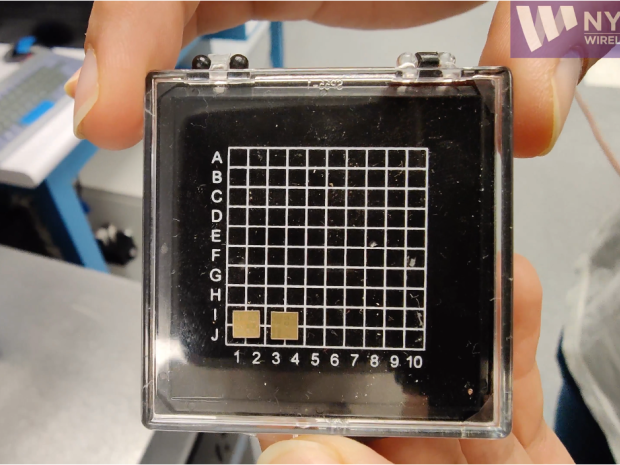About
The THz Measurement Facility is a laboratory to support measurements of devices, circuits, materials, and radio propagation channels at the highest reaches of the radio spectrum.

The Terahertz (THz) Measurement Facility — a collaboration between New York University, University of Colorado at Boulder, University of Nebraska–Lincoln, and Florida International University — is a laboratory to support basic measurements of devices, circuits, materials, and radio propagation channels at the highest reaches of the radio spectrum. While today’s cellular telephones and wi-fi networks operate at frequencies below 100 GHz, there is great promise for greater download speeds and vast new wireless applications by moving up to the underexplored sub-THz and THz frequency bands – frequencies from 100 to 500 GHz. This MRI grant provides a facility to explore wireless components and systems at these new frequencies.
This grant supports three areas of measurement:
a) Radio Frequency Integrated Circuit (RFIC) measurements
b) radio propagation and channel modeling, and
c) metrology and calibration, over the contiguous frequency range of 75 GHz to 500 GHz.
A unique concept of this facility is the loan of equipment, where institutions may borrow THz components to conduct remote field measurements for wireless communications, propagation, and sensing. Evolving semiconductors and integrated circuits, as well as the next-generation electronics based on layered materials (e.g., graphene), will be measured at THz bands using the RFIC probe station.
This facility will have a broad impact on the future of communications, materials, and devices. The creation of new calibration and metrology approaches are vital for accurate and repeatable measurements throughout the US research community in this underexplored range of frequencies. The study of nanotechnology devices using the RFIC probe station will unleash new capabilities in sensing, communications, and computing that may have a transformative impact on society. The radio propagation measurement systems offer vital knowledge for researchers in industry, academia and international standard bodies who will design future high-speed wireless networks for 6G, 7G and beyond. Students using this facility will gain knowledge at these new frequency bands.

